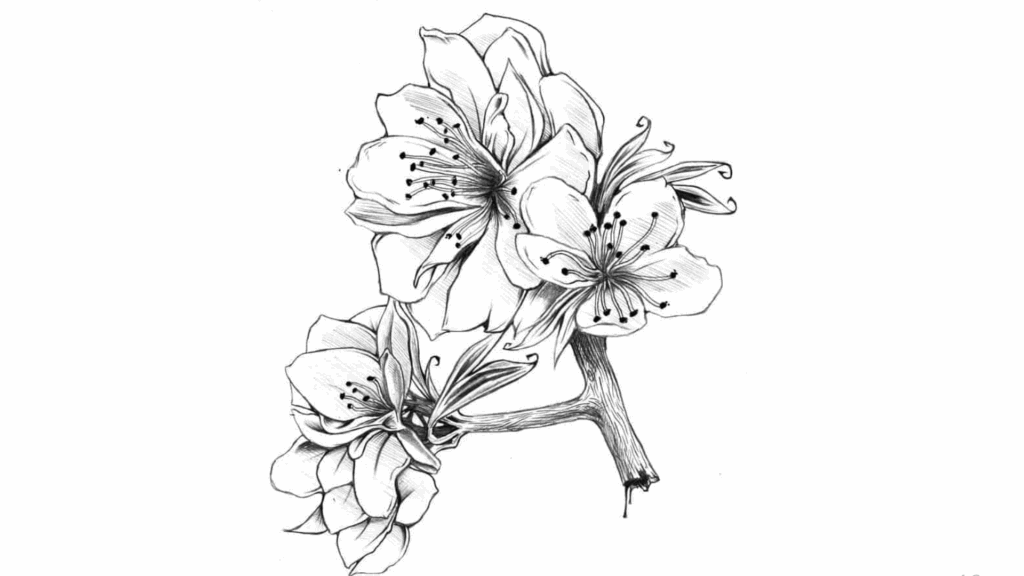Drawing flowers can feel intimidating at first, but it doesn’t have to be that way.
If you’re sketching in a coffee shop or doodling during your lunch break, flowers offer endless creative possibilities. And the best part is there’s no wrong way to do it.
You might start with simple daisies, then move on to elaborate roses or abstract botanical designs. Some days, you’ll want realistic petals, and other days, you’ll prefer whimsical interpretations.
The beauty of flower drawing ideas lies in their versatility; they adapt to your mood, skill level, and available time.
The Symbolism Behind Different Flower Drawings
Flowers aren’t just pretty subjects; they’re loaded with meaning. When you understand what different blooms represent, your drawings become more intentional and personal.
Additionally, incorporating symbolism adds an extra layer of depth to your art, allowing viewers to connect with it on a deeper level.
Roses scream love and passion, while lotus flowers whisper about purity and rebirth. Sunflowers are all about resilience and following your dreams.
These symbolic meanings have shaped art for centuries, and they can also influence your creative choices. When you pick a flower to draw, you’re also picking its story.
Personalizing Your Art with Meaning
Your flower drawings can become a visual diary of sorts. Feeling hopeful? Sketch some daffodils. Going through a tough time? Maybe draw some resilient dandelions pushing through concrete.
You can also use flower symbolism as daily affirmations, drawing what you want to embody or attract into your life.
Easy and Unique Flower Drawing Ideas and Inspirations
Not every flower drawing has to be complicated or perfectly realistic. Sometimes, the simplest approaches yield the most charming results, and unique twists on classic blooms can make your art truly stand out.
These ideas prove that creativity matters more than technical perfection.
1. Daisy with Radiating Petals
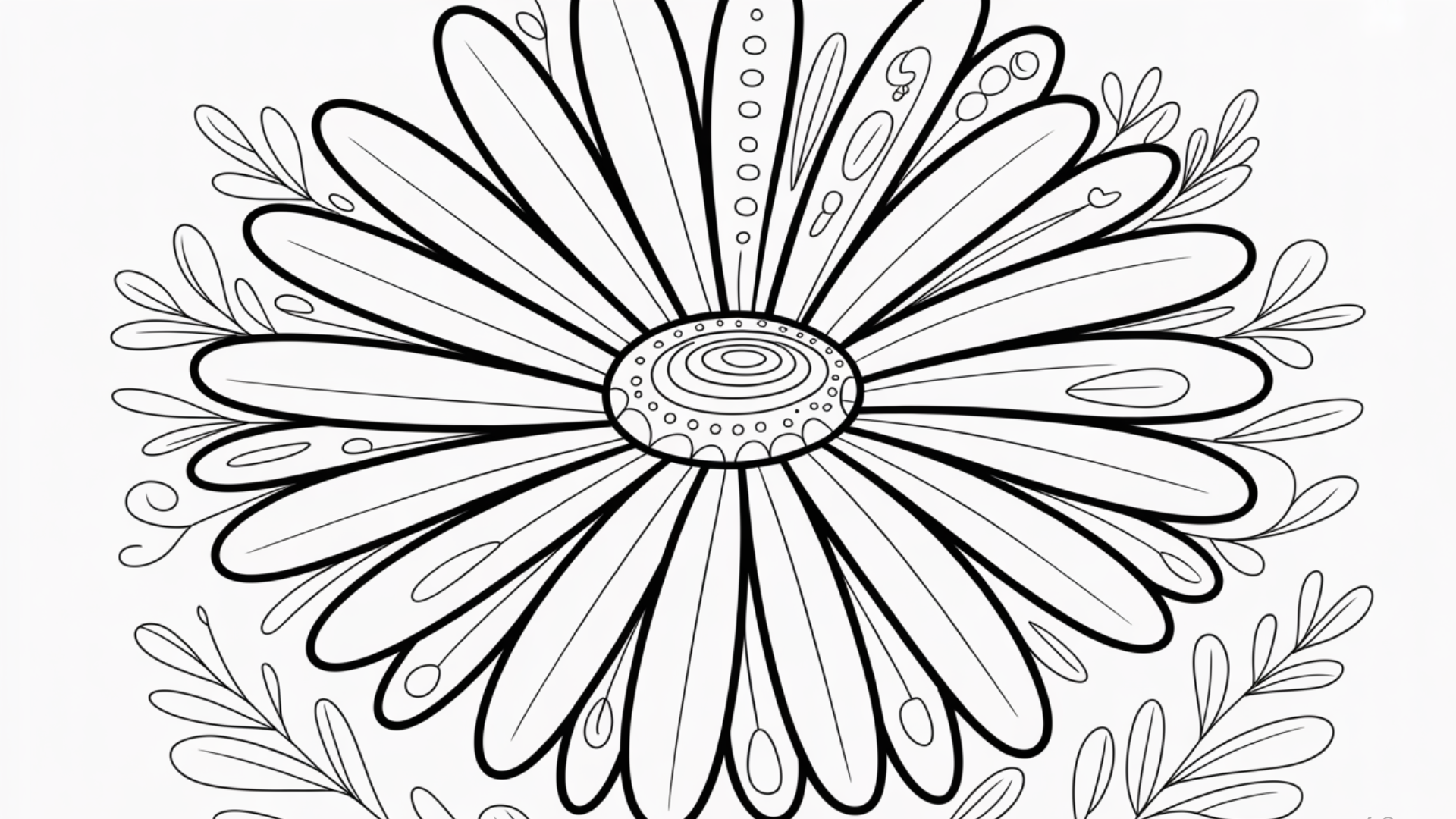
A cheerful daisy featuring a central disc and long, narrow petals evenly spaced around it. It’s a classic, symmetrical flower that’s easy to replicate and looks lovely as a standalone or repeated pattern.
- Style Tip: Keep petals evenly spaced for balance
- Great For: Beginner-friendly outlines and ink work
- How to Draw: Start with a circle, draw straight lines outward, then add slim petals along those guides
2. Simple Five-Petal Blossom
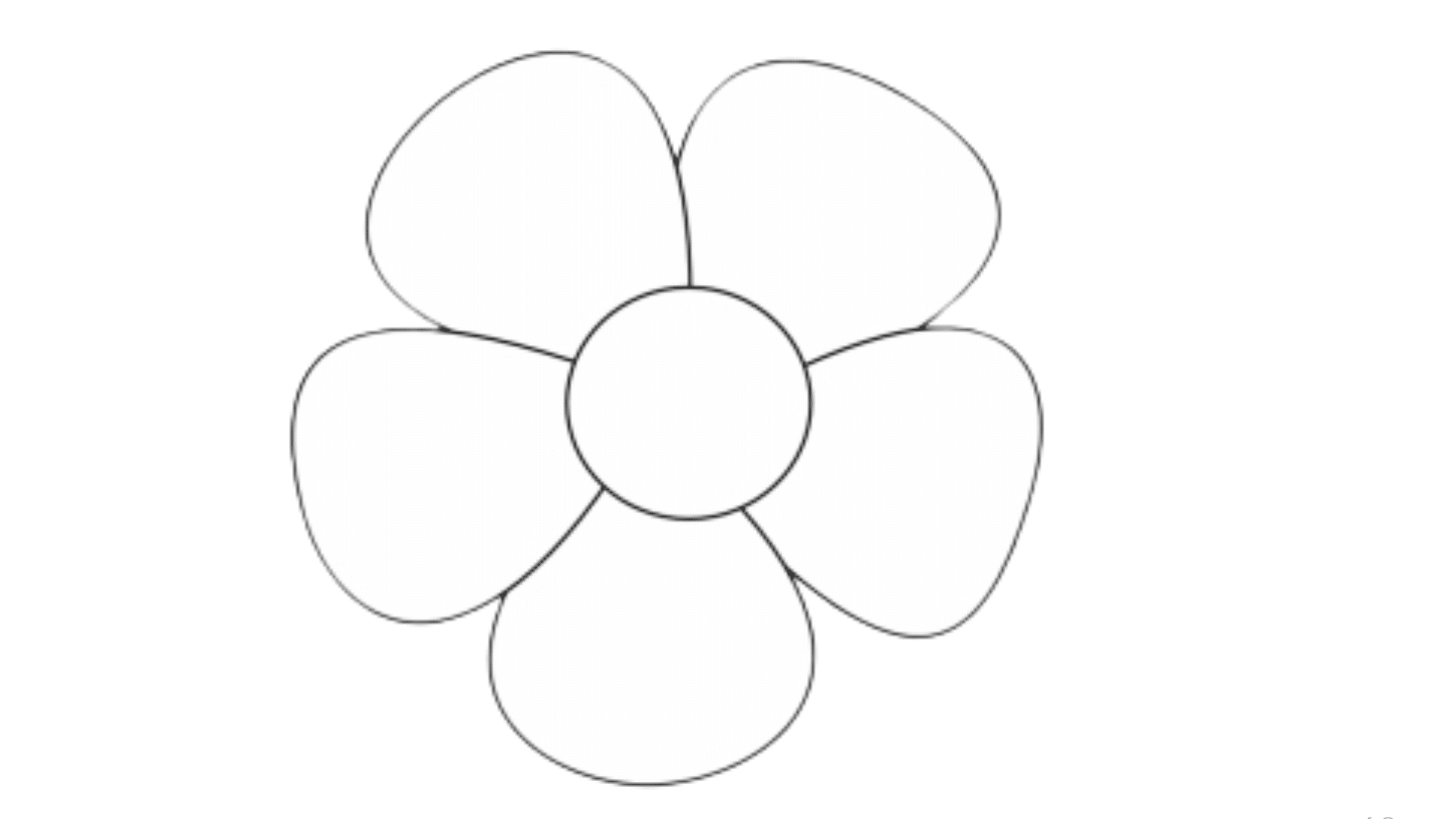
A beginner-friendly flower with five rounded petals surrounding a tiny central dot. Its minimalism makes it ideal for quick doodles, logos, or accent motifs in decorative art and notebooks.
- Style Tip: Vary petal width for a dynamic look
- Great For: Bullet journaling or icon-style sketches
- How to Draw: Draw a small center and sketch five evenly spaced petals like rounded teardrops
3. Mini Tulip in a Bud Vase

A delicate tulip with a cup-shaped bloom, standing in a slim vase. It adds a soft and graceful vibe, especially when paired with gentle shading or pastel tones.
- Style Tip: Add light shading for a glass vase effect
- Great For: Greeting cards and soft watercolor effects
- How to Draw: Draw an oval for the bloom, elongate into petals, then sketch a slender stem and vase
4. Bellflower Hanging Down
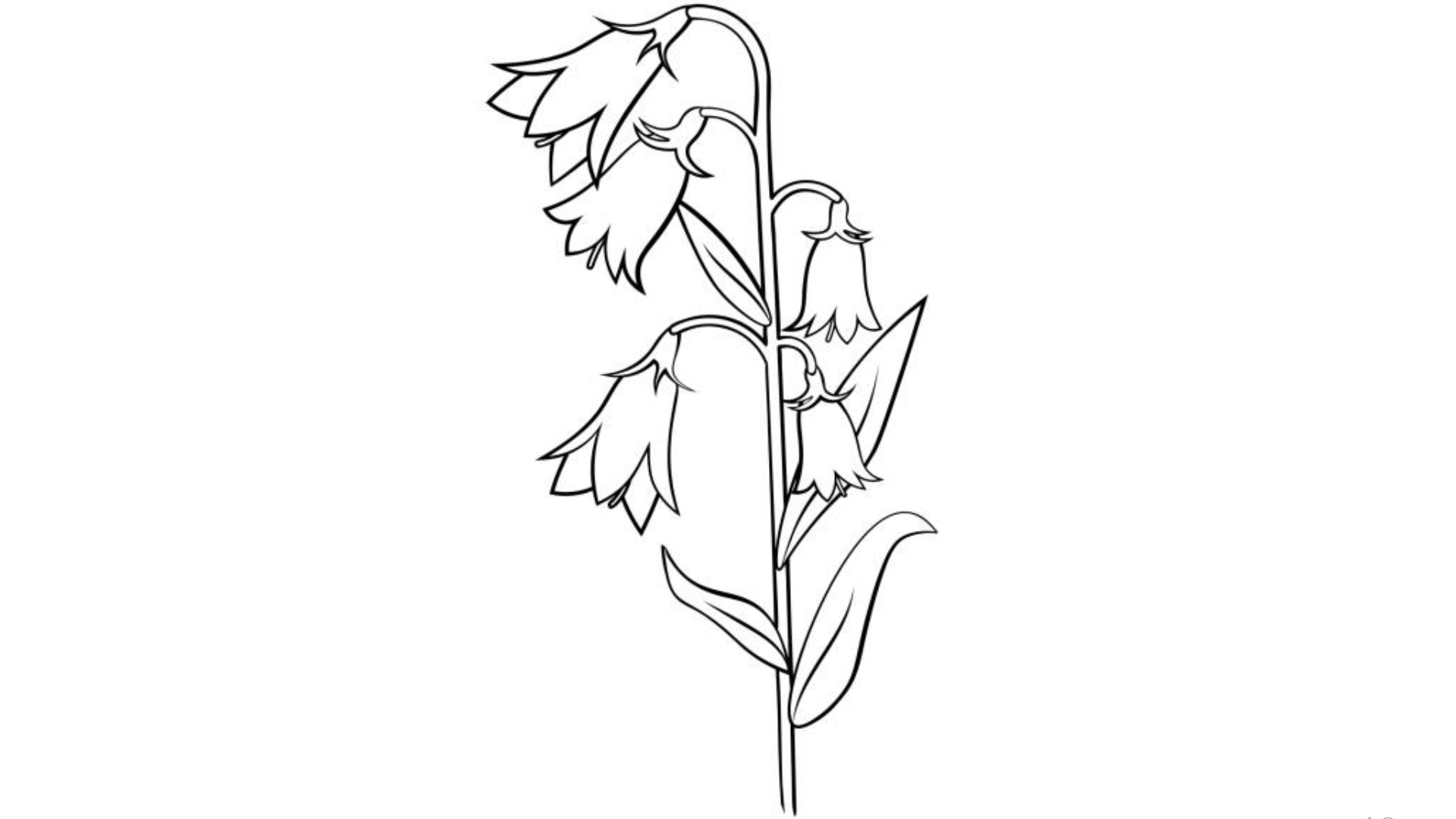
This drooping flower has a curved stem and upside-down bell-like petals. It captures softness and gravity and is perfect for illustrating gentle motion or wildflower scenes.
- Style Tip: Emphasize the downward curve of petals
- Great For: Hanging arrangements or botanical pages
- How to Draw: Start with a curved stem, sketch a bell shape facing down, then add flaring petal edges
5. Open Poppy with Layered Petals
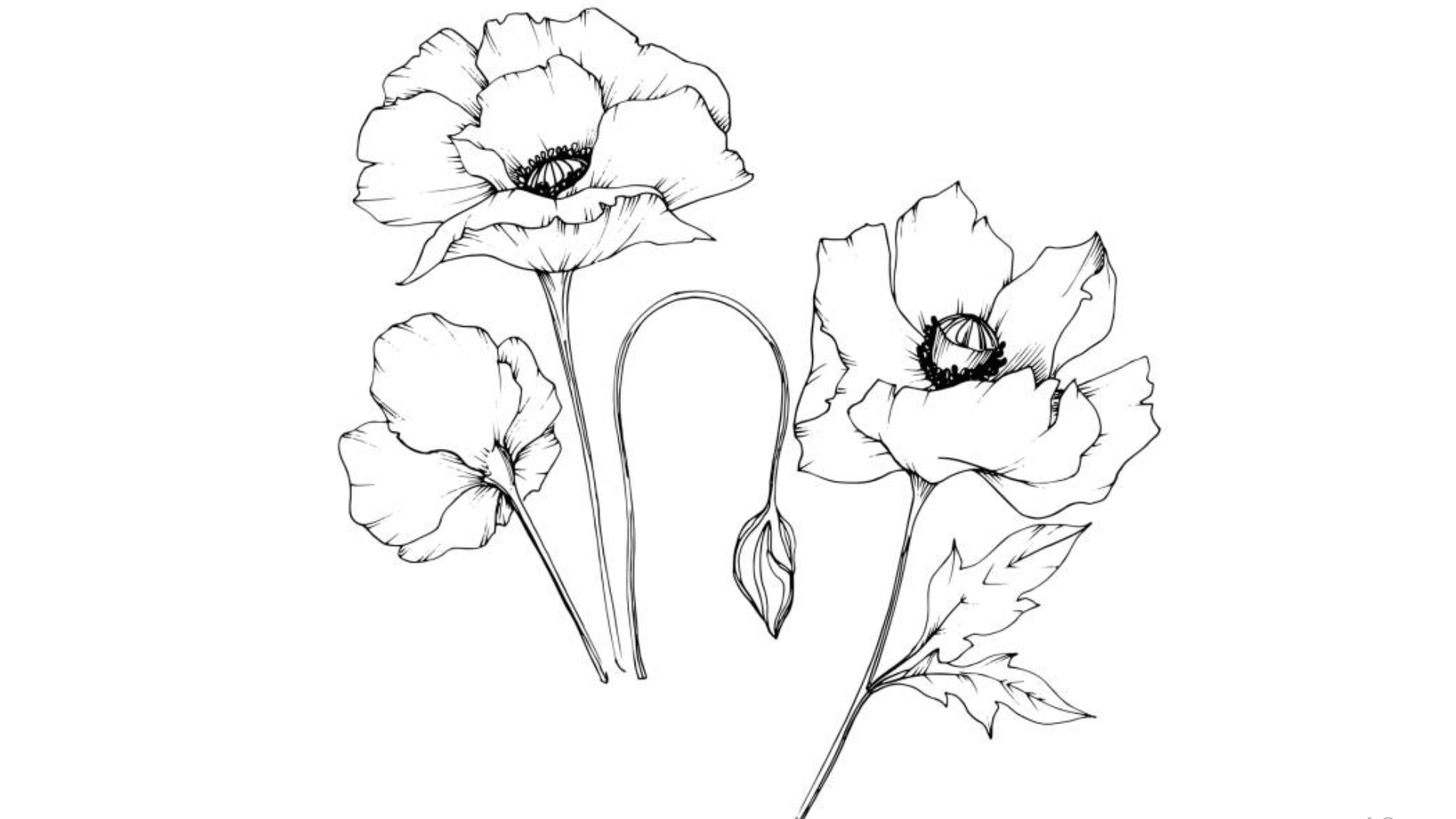
A bold poppy with irregular, overlapping petals and a detailed, textured center. The flower appears lively and full of movement, great for expressive or dramatic floral pieces.
- Style Tip: Use fine lines for petal texture
- Great For: Dramatic floral illustrations
- How to Draw: Begin with the center, draw loose wavy petals around it, then layer more petals behind
6. Rose
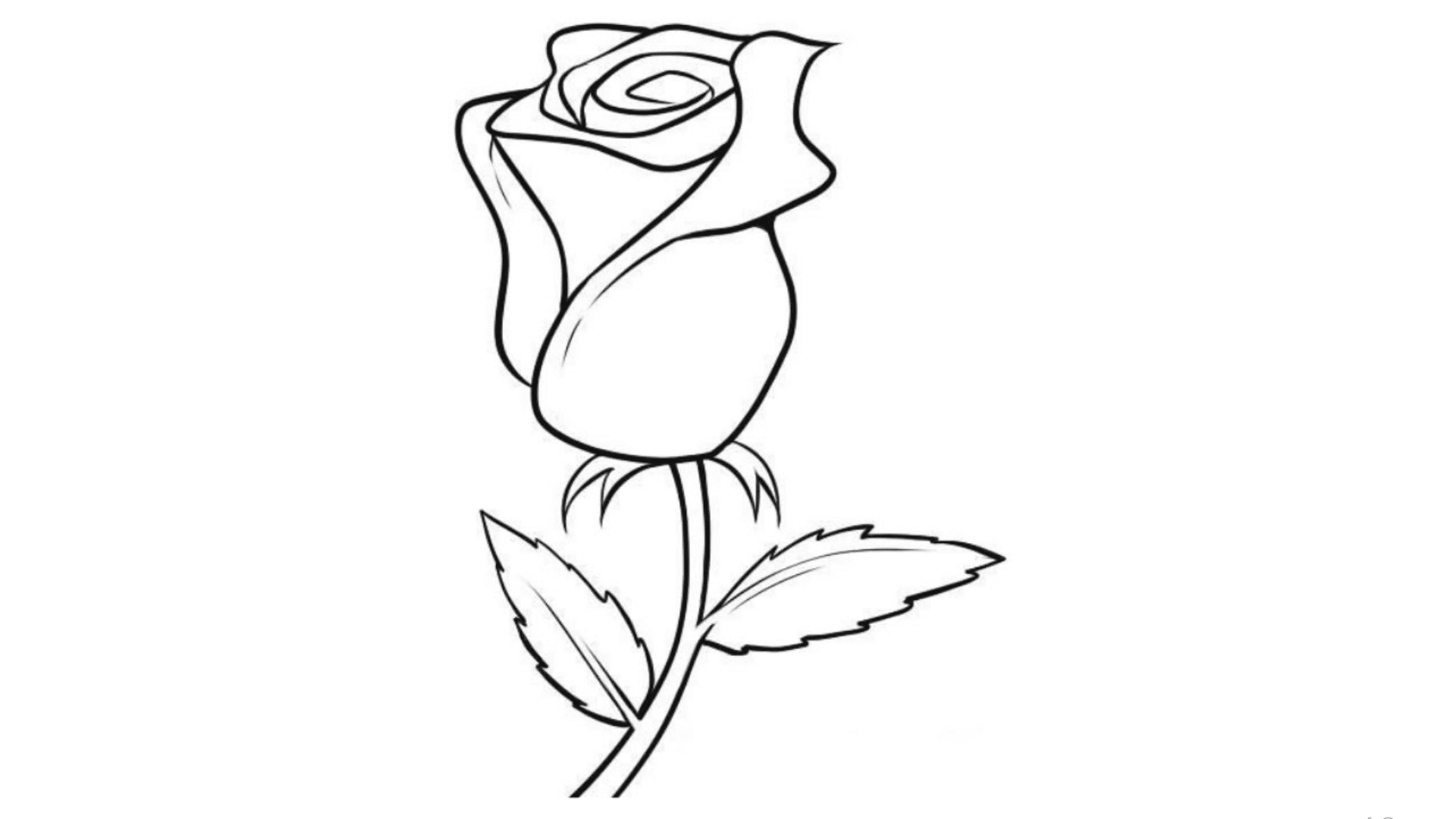
This playful rose includes a swirl center, round petals, and a smiling face. Its charming personality makes it ideal for kids’ crafts, stickers, and friendly branding.
- Style Tip: Exaggerate the spiral for charm
- Great For: Comic pages or stickers
- How to Draw: Spiral the center, sketch round petals around it, then add cartoon eyes and a smile
7. Carnation
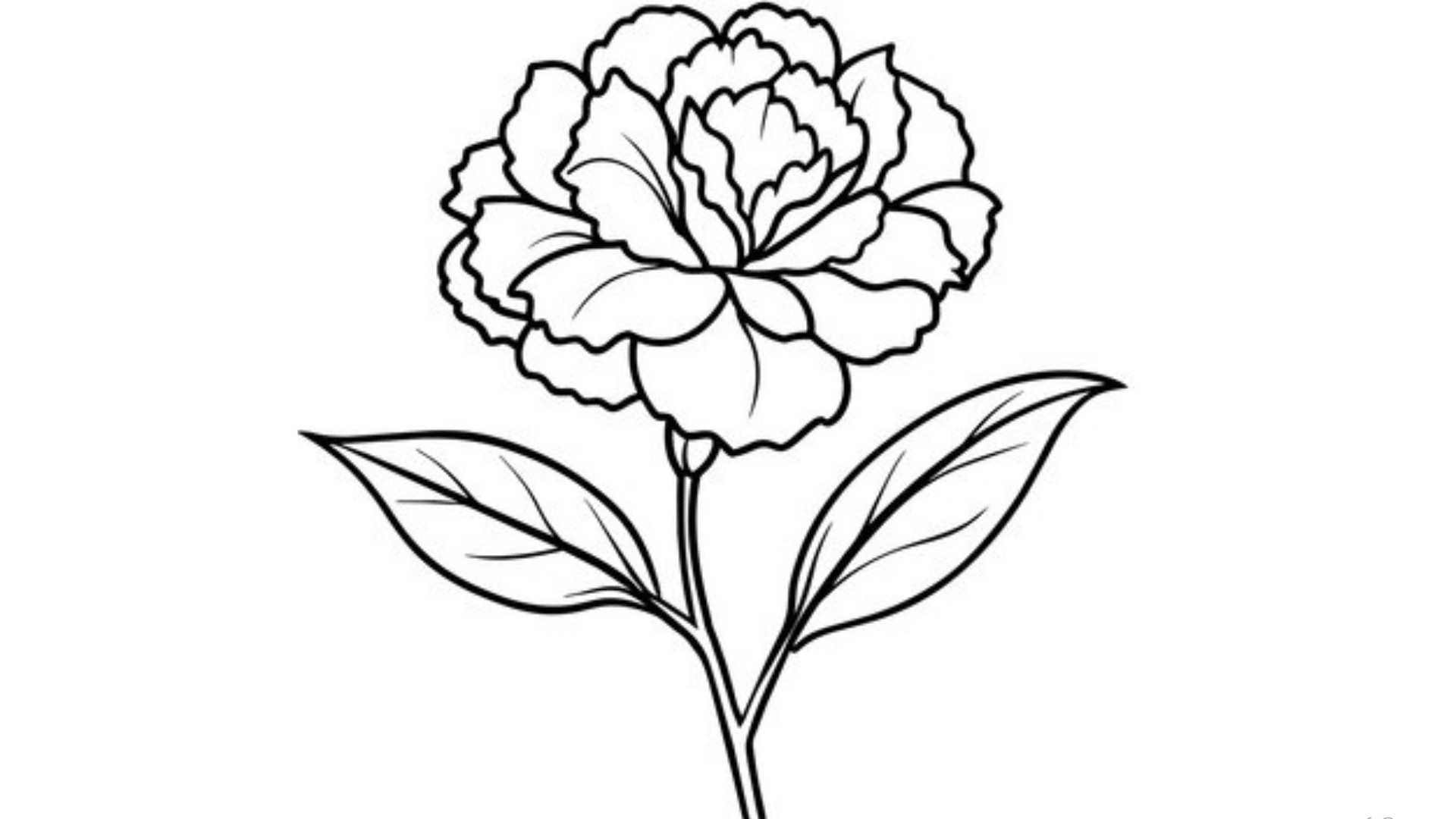
Carnations are known for their ruffled, serrated petals that form a full, rounded bloom.
Their textured look offers a wonderful opportunity to explore line variety, depth, and movement in floral drawing.
- Style Tip: Use jagged, wavy lines for the petal edges to capture the signature frill.
- Great For: Romantic bouquets, textural studies, detailed ink or pencil sketches.
- How to Draw: Start with a tight cluster of small, irregular petals in the center, then build outward with larger, frilled layers. Add a slender, slightly zigzag stem with narrow leaves for realism.
8. Spiral Center Sunflower
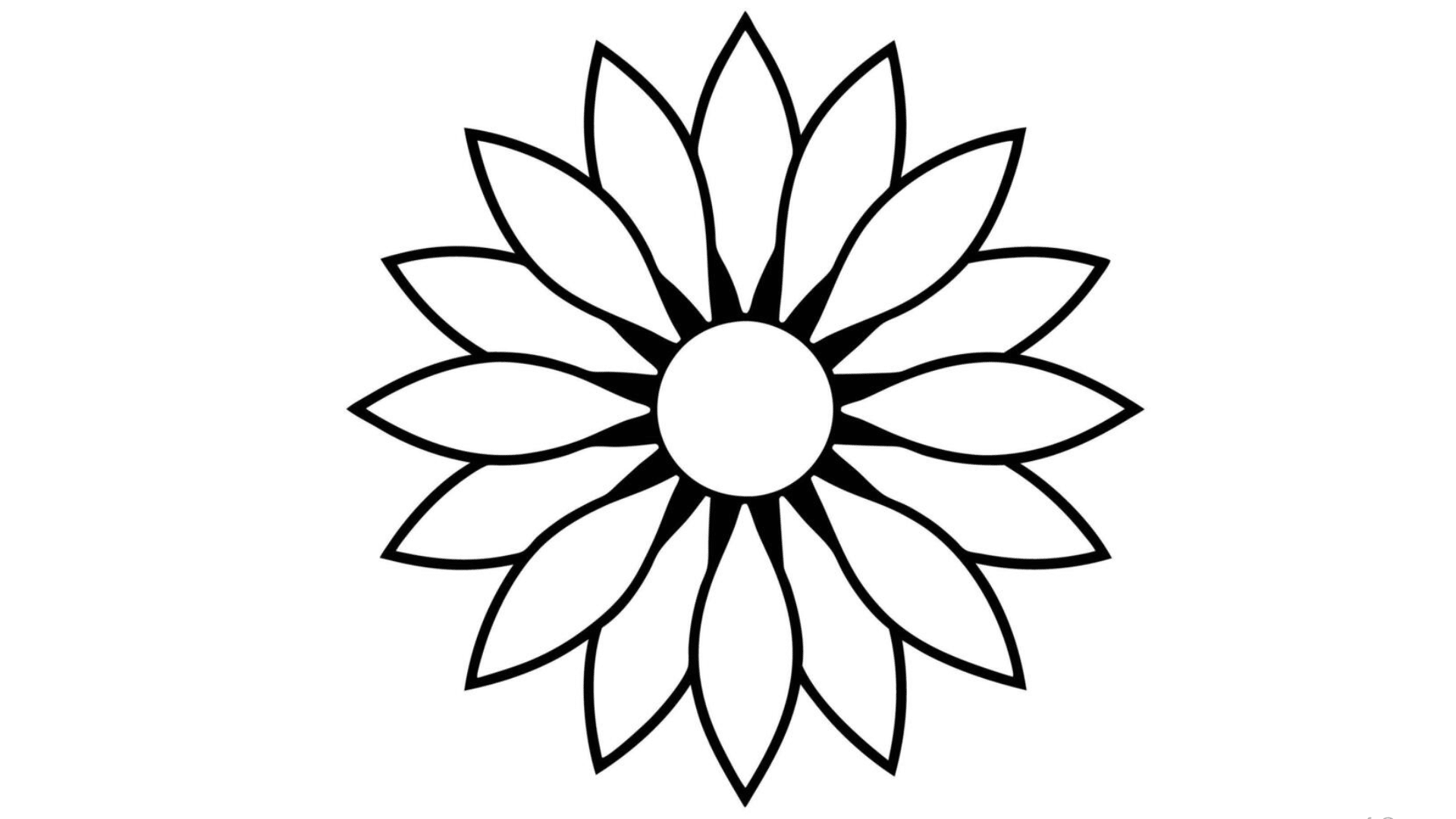
A sunflower with a complex spiral center pattern and large oval petals surrounding it. It merges natural beauty with geometric beauty.
- Style Tip: Use curved lines to build the spiral
- Great For: Zentangle or stylized realism
- How to Draw: Draw the spiral center first, then evenly space thick petals outward
9. Orchids
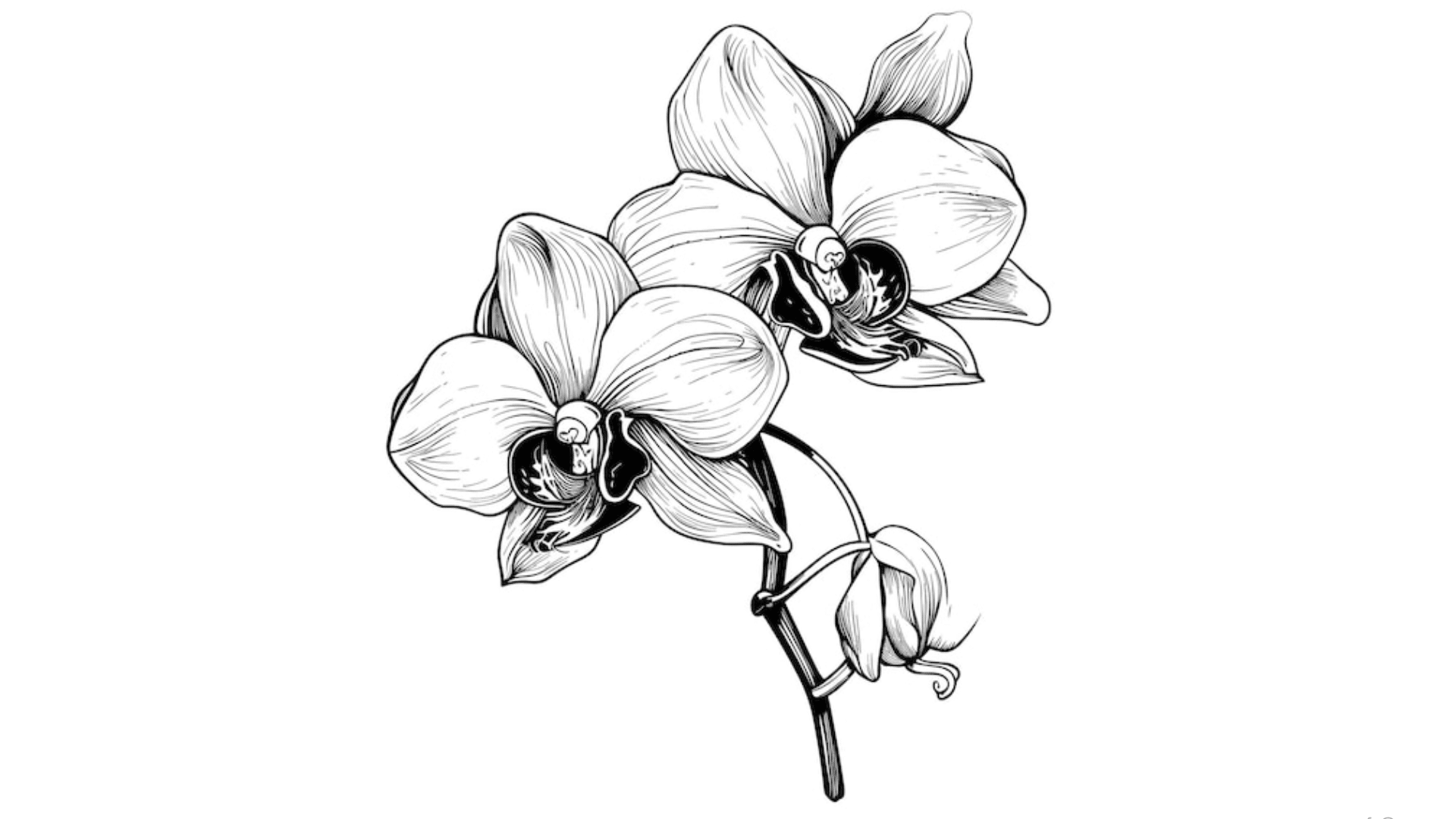
Orchids are exotic, asymmetrical flowers with three outer sepals and three inner petals, one of which forms a distinct lip (labellum).
Their graceful structure and vibrant personality make them captivating subjects for both simple and intricate artwork.
- Style Tip: Focus on the contrast between the large rounded petals and the dramatic lip.
- Great For: beautiful botanical art, exotic floral studies, ink or watercolor pieces.
- How to Draw: Begin with a central oval (the lip), then add the two lateral petals and three sepals behind. Sketch the slender stem and add elliptical leaves or air roots for realism.
10. Lotus
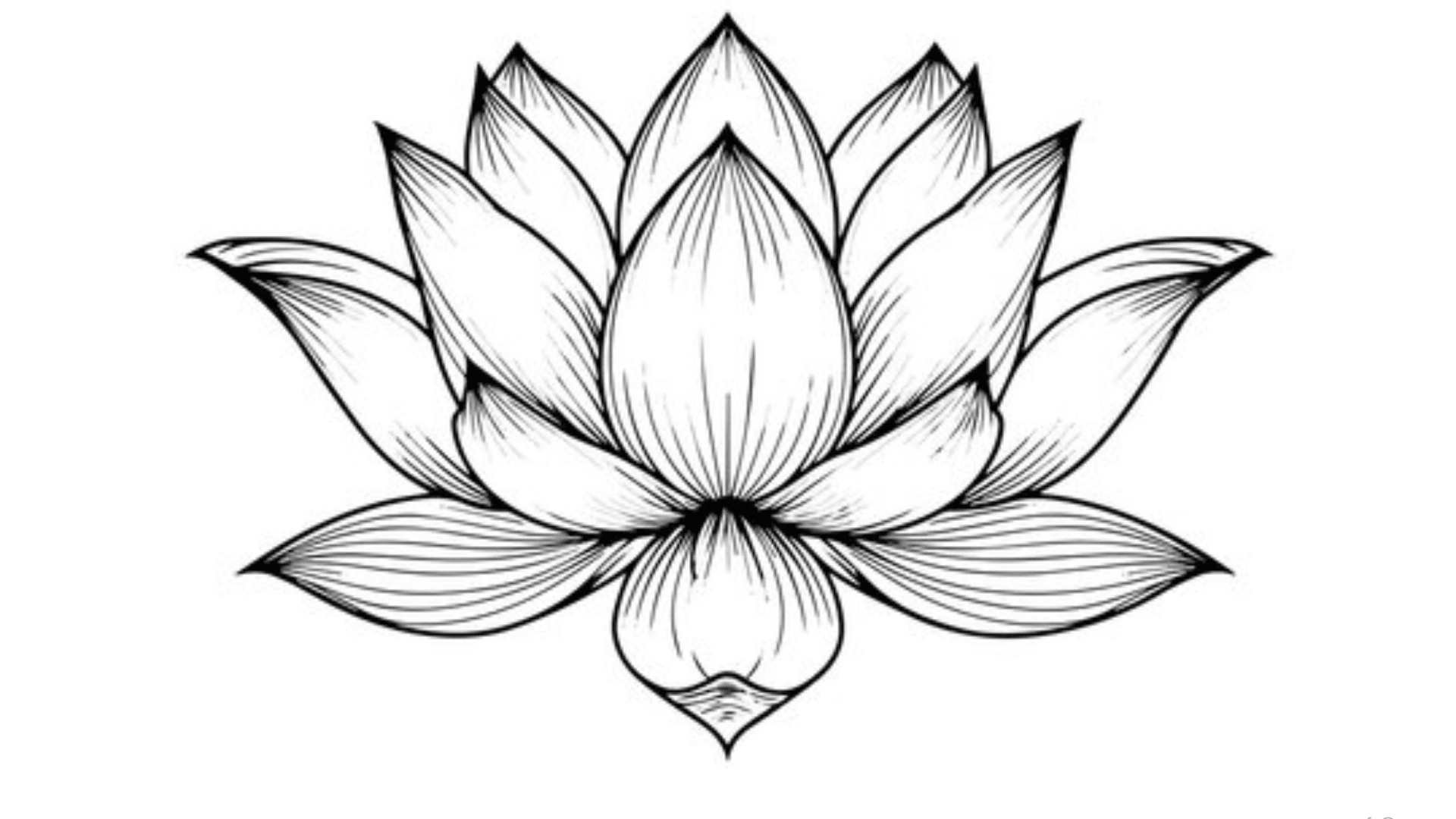
Draw the lotus using evenly spaced triangular or diamond-shaped petals, stacked in symmetrical layers.
This style gives the flower a clean, structured look inspired by sacred geometry and works beautifully in decorative or spiritual-themed artwork.
- Style Tip: Use a compass or grid lines to maintain symmetry.
- Great For: Mandalas, spiritual symbols, tattoo designs.
- How to Draw: Start with a center point and draw layered geometric petals radiating outward, keeping angles consistent.
11. Lily with Stamen Details
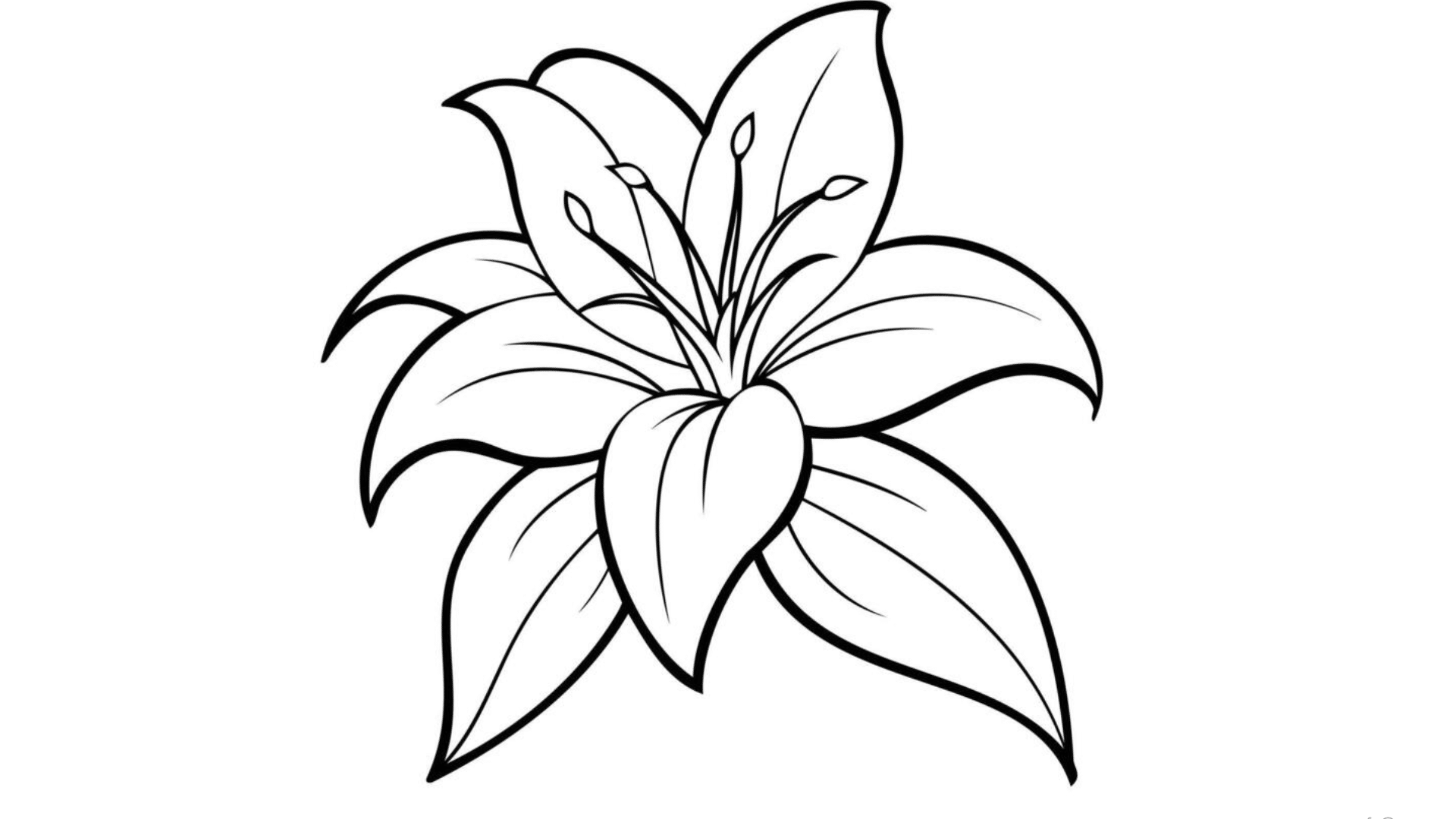
A graceful flower with large pointed petals and detailed stamens in the center. The lily conveys beauty and is often drawn for more realistic or ceremonial artwork.
- Style Tip: Highlight stamen with color or gold ink
- Great For: Wedding invitations or botanical pieces
- How to Draw: Sketch six long petals, then draw the central pistil and stamen with fine lines
12. Blooming Hibiscus
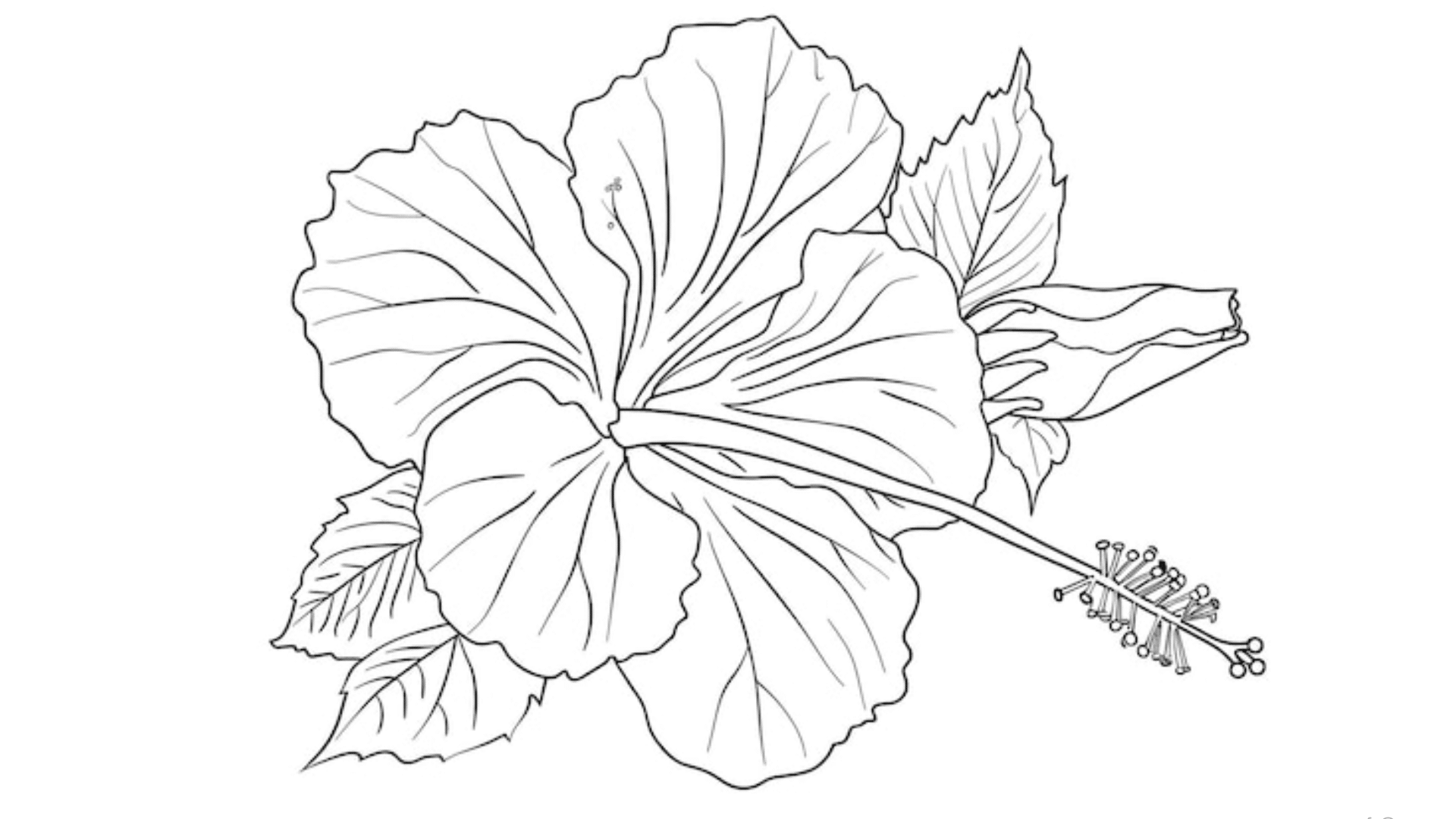
A tropical flower with broad, ruffled petals and a distinct protruding stamen. It adds a bold splash to beachy or vibrant artwork.
- Style Tip: Use deep red or pink tones
- Great For: Beach or summer-themed art
- How to Draw: Start with a five-petal layout, add wavy edges, and draw the central style extending outward
13. Lavender Sprig
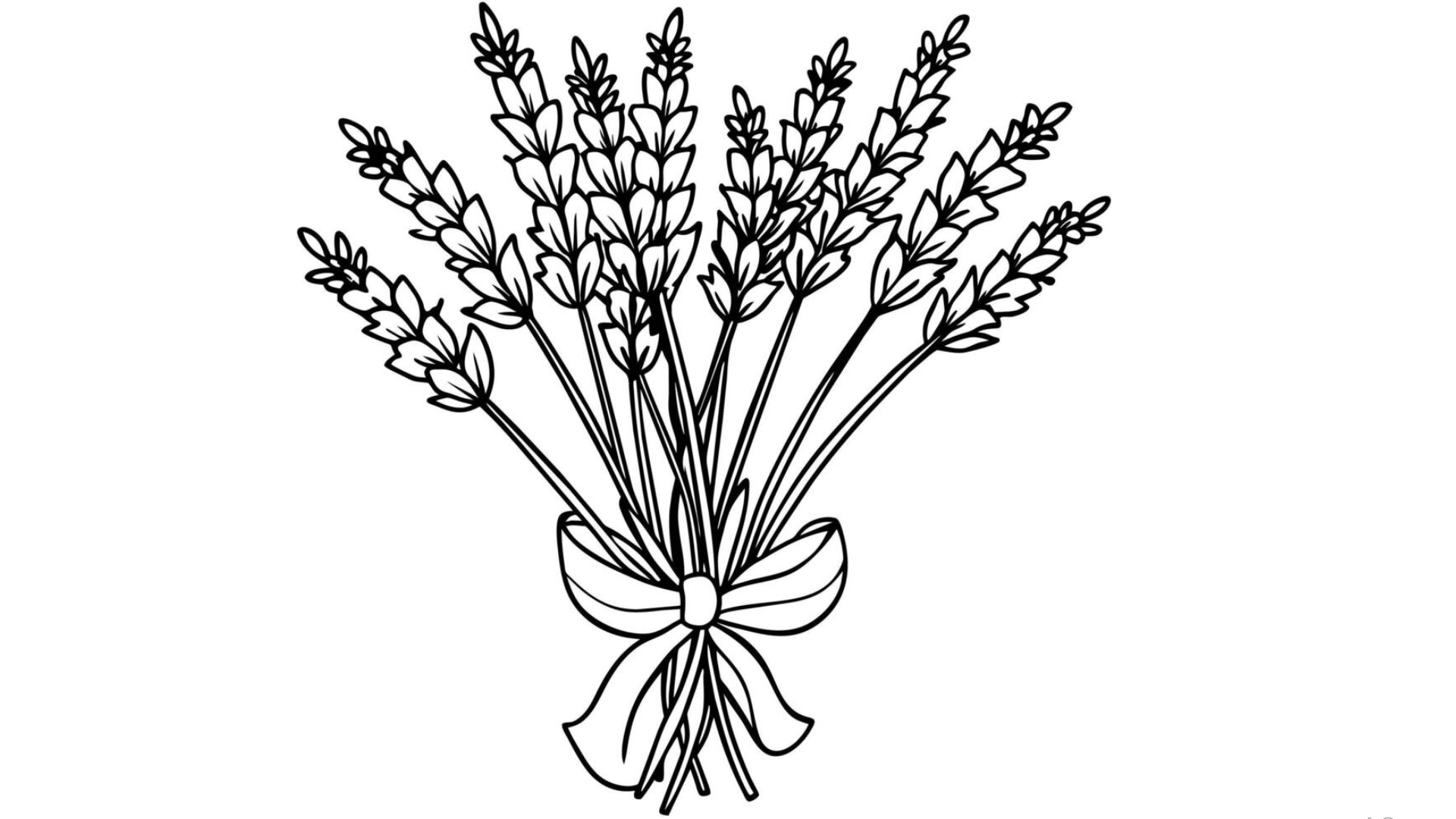
A tall, beautiful stalk with multiple tiny blossoms clustered at the top. Known for its calming aesthetic, it’s perfect for minimalist sketches and herbal illustrations.
- Style Tip: Sketch with soft purples or lilac hues
- Great For: Essential oil labels or spa visuals
- How to Draw: Draw a long stem, then add small clustered ovals or diamonds going upward
14. Cherry Blossom Branch
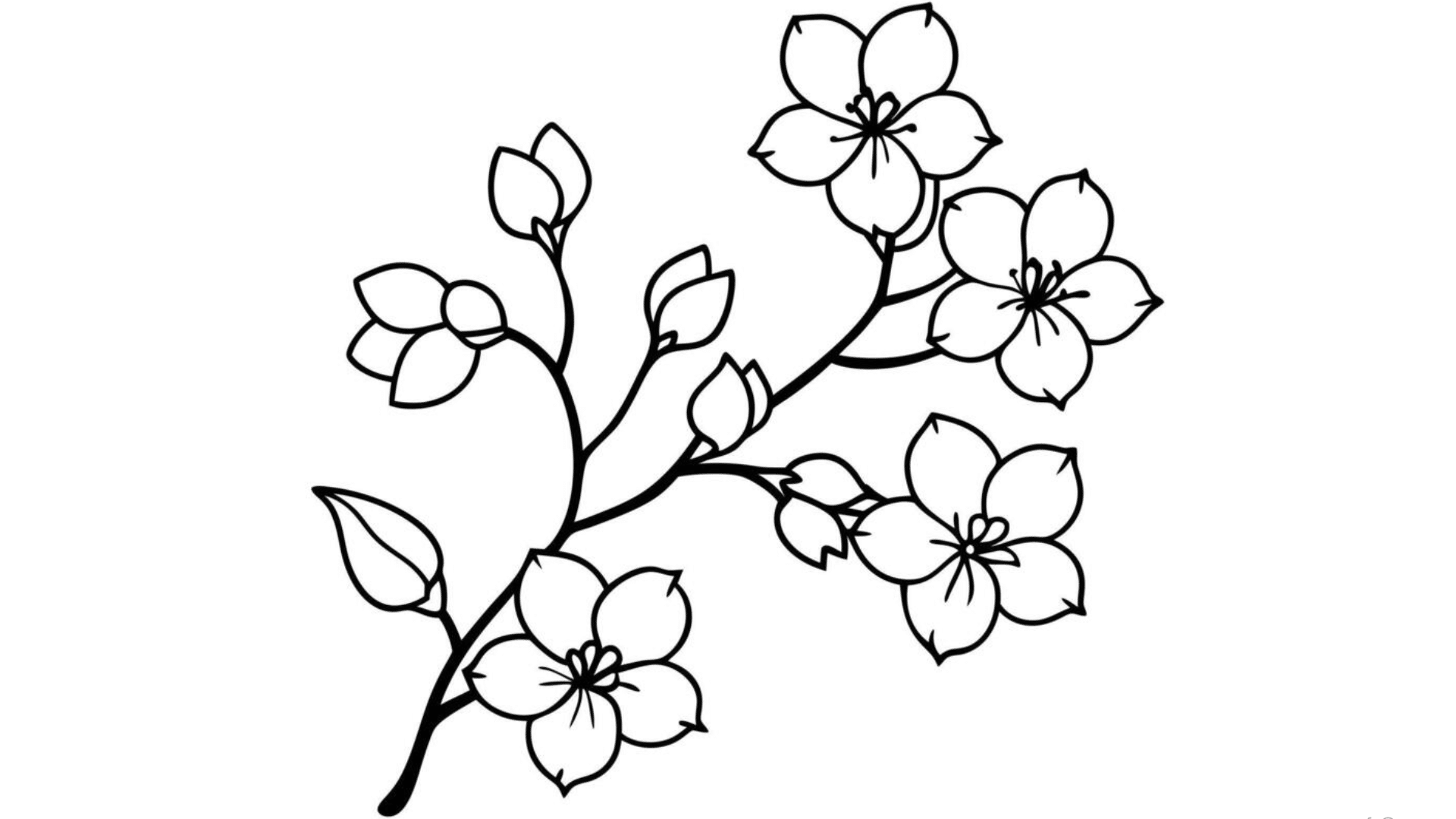
Delicate pink blossoms clustered on a branch, evoking springtime and fleeting beauty. Each bloom is small but impactful when grouped.
- Style Tip: Keep petal edges rounded and soft
- Great For: Spring scenes or Asian-inspired art
- How to Draw: Draw a curved branch, then add clusters of five-petal flowers along its length
15. Water Lily on a Pond
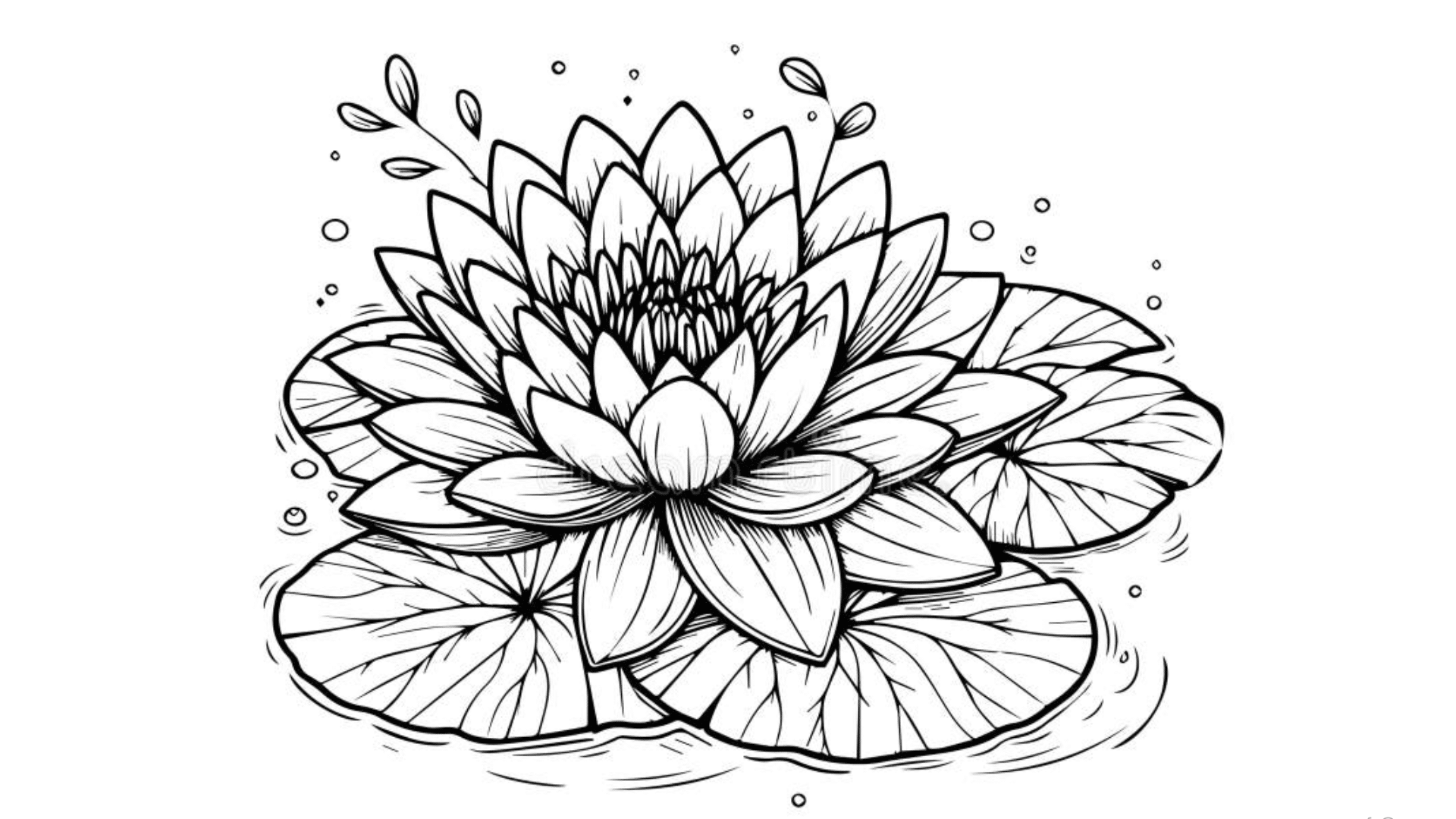
A wide, peaceful flower that sits on a round lily pad, often associated with zen and tranquility.
- Style Tip: Reflect petals in water beneath
- Great For: Tranquil compositions or nature studies
- How to Draw: Start with the lily pad, then draw layers of broad petals emerging from the center
16. Narcissus
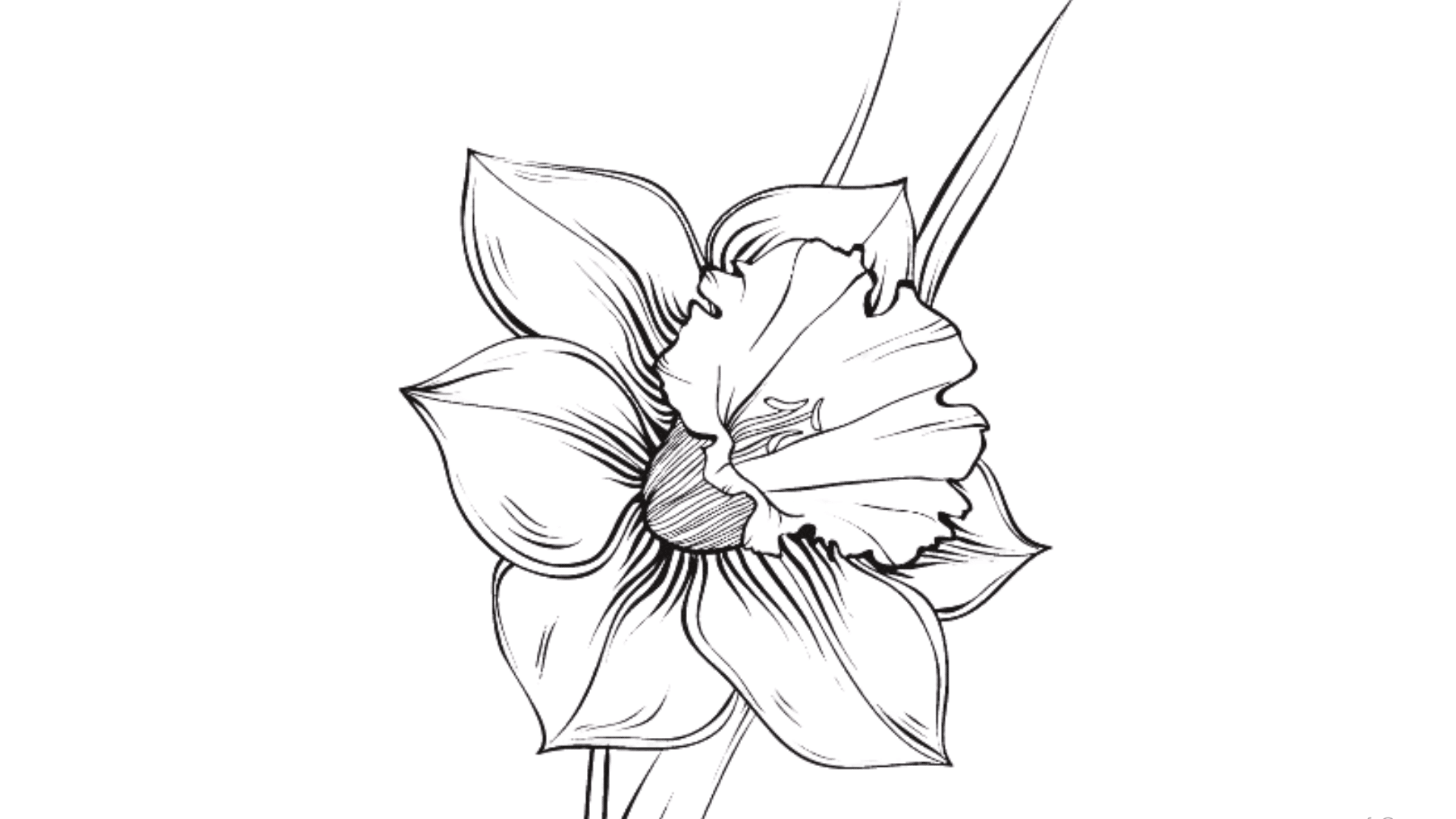
Narcissus flowers, often associated with daffodils, feature a trumpet-shaped corona and six symmetrical petals. They symbolize self-reflection and beauty, making them a poetic choice for floral art with a deeper meaning.
- Style Tip: Highlight the trumpet center with shading or color contrast.
- Great For: Symbolic sketches, mythology-inspired artwork, seasonal themes.
- How to Draw: Begin with the fluted central trumpet, then draw six evenly spaced, oval or pointed petals around it. Include slender, upright leaves and a graceful stem to complete the look.
17. Iris
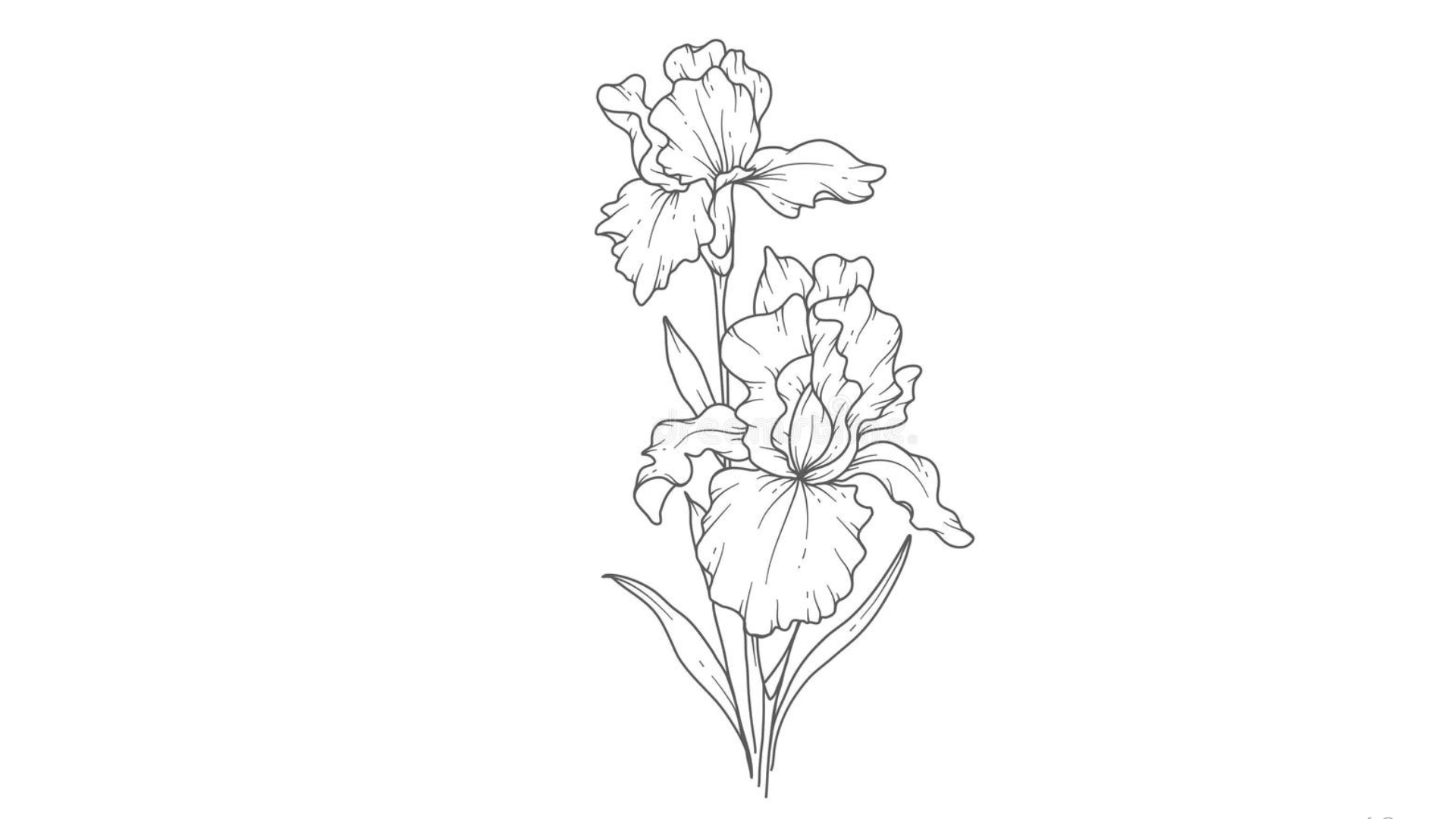
Iris flowers have an beautiful, architectural form with three upright petals (standards) and three drooping petals (falls), often with intricate veining. Their graceful curves make them ideal for expressive and slightly dramatic floral drawings.
- Style Tip: Use flowing lines and delicate shading to emphasize petal folds and curves.
- Great For: Expressive floral compositions, fine line art, watercolor detailing.
- How to Draw: Start by sketching the central stem and bud. Add three upward-pointing petals, then draw three downward-curving outer petals. Include long, sword-like leaves at the base to anchor the form.
18. Marigold
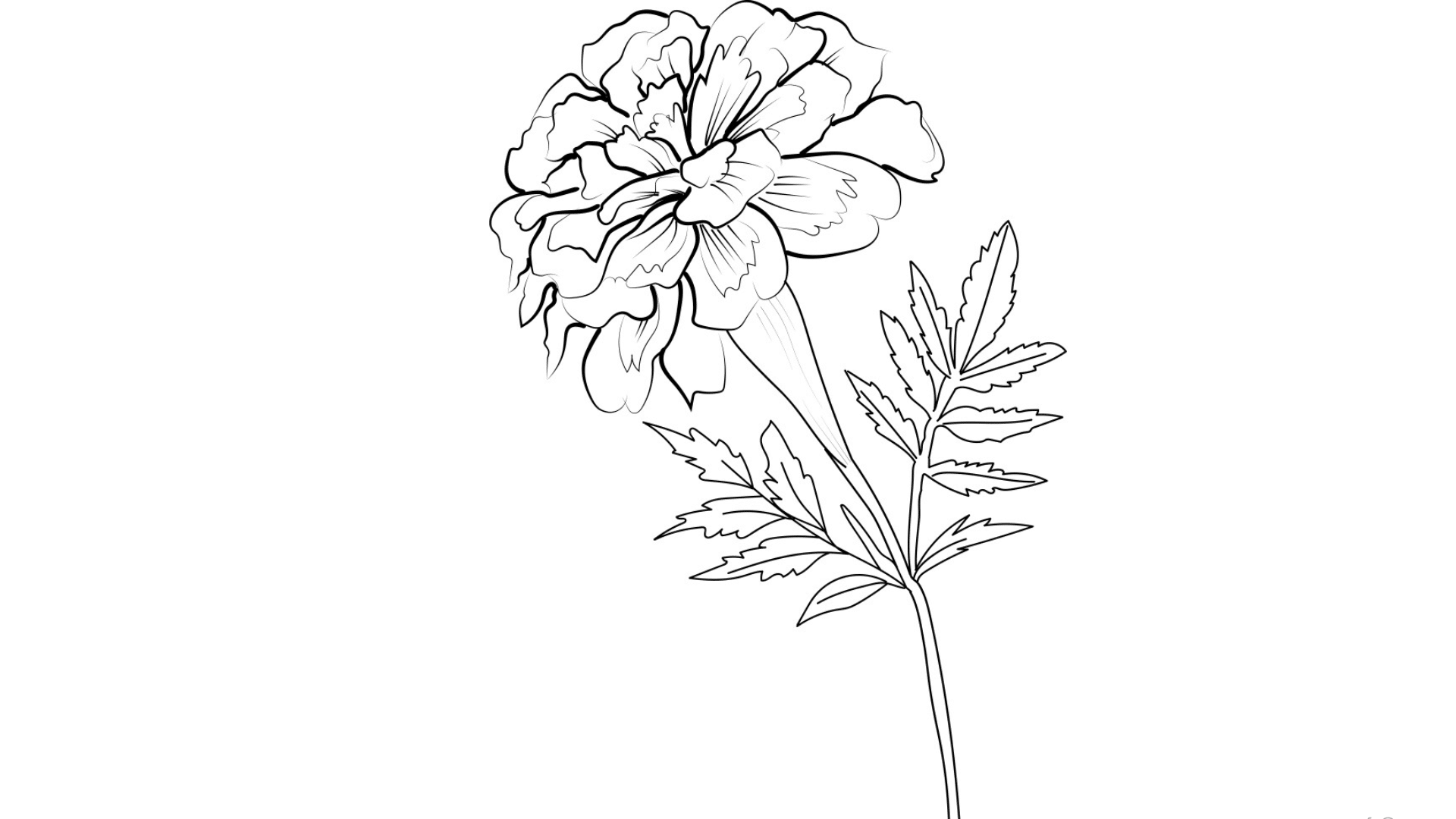
Capture the marigold’s signature fullness by layering ruffled, rounded petals in tight circular patterns.
Its vibrant form is perfect for practicing repetition and texture, while its cultural symbolism adds emotional richness to your artwork.
- Style Tip: Use short, scalloped lines to mimic petal folds and dense texture.
- Great For: Festive art, cultural illustrations, flower pattern practice.
- How to Draw: Start with a small central circle, then draw multiple layers of overlapping, wavy-edged petals radiating outward in a spherical shape.
19. White Cosmos
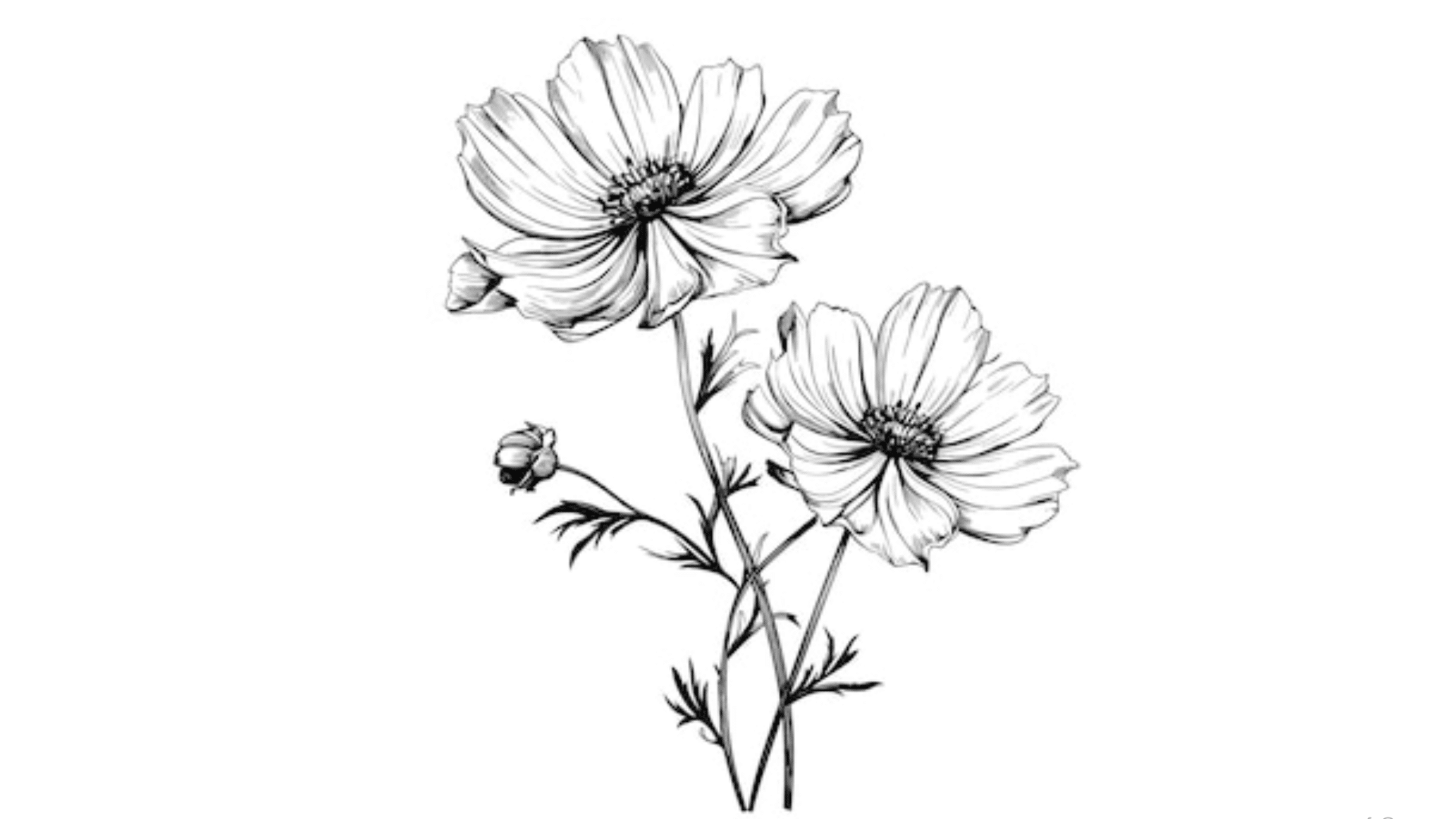
White cosmos flowers are airy, daisy-like blooms with long, slender petals and a bright yellow center.
Their clean, open form makes them ideal for light, graceful compositions and expressive sketches with a touch of natural beauty.
- Style Tip: Use delicate, flowing lines to highlight petal length and softness.
- Great For: Loose botanical illustrations, line-and-wash art, nature journaling.
- How to Draw: Begin with a small central disc, then draw 8–10 long, slightly curved petals radiating out. Add a tall, thin stem and feathery leaves to complete the look.
20. Daffodil
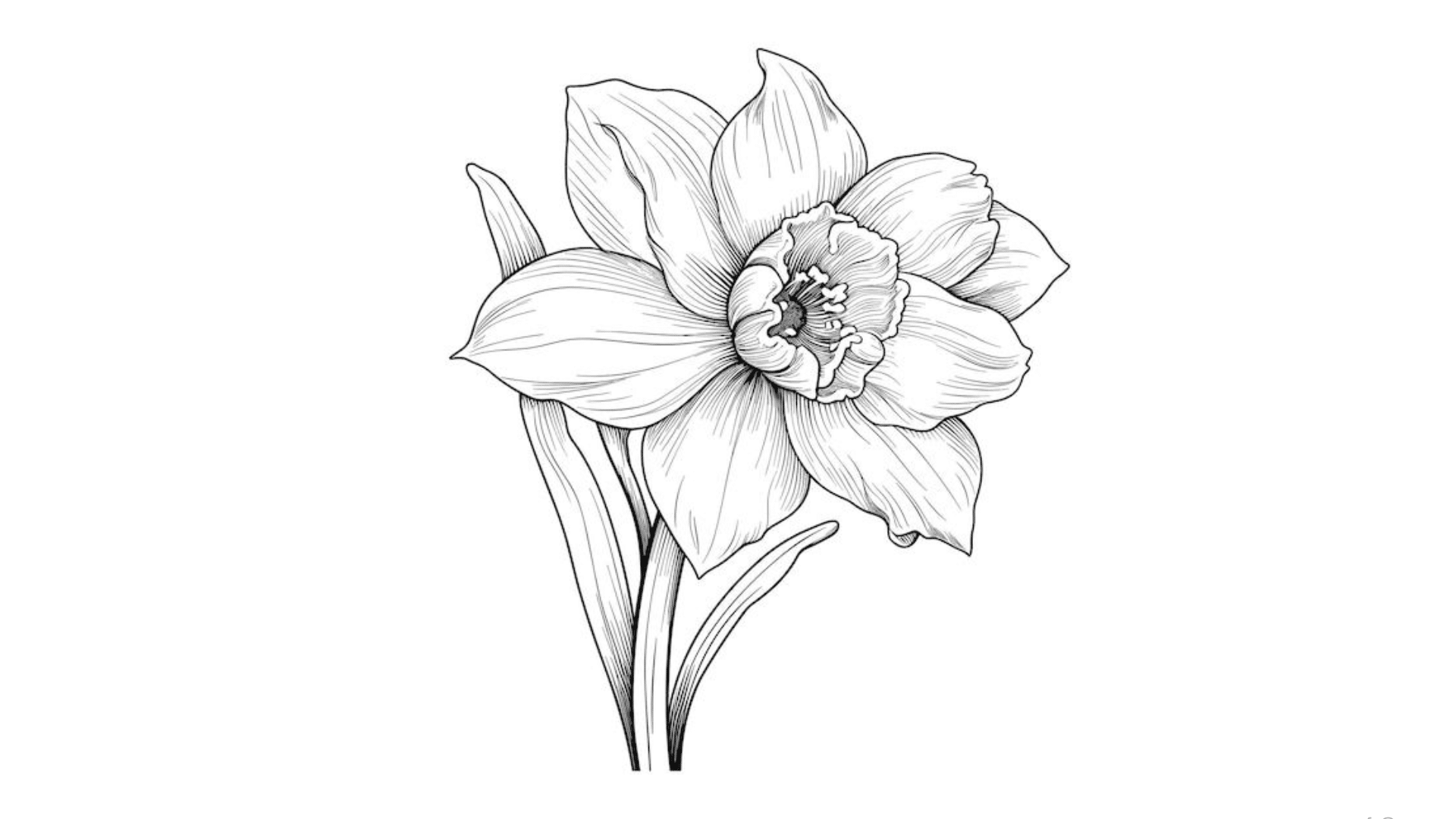
Daffodils are distinguished by their trumpet-shaped center and six delicate outer petals. Their beautiful, springlike appearance makes them a lovely choice for botanical drawing or symbolic art representing new beginnings and hope.
- Style Tip: Emphasize the central trumpet using contrast and soft shading.
- Great For: Spring-themed illustrations, nature journals, symbolism of renewal.
- How to Draw: Begin with the central cup (a narrow cylinder or cone shape), then add six equally spaced pointed petals radiating from behind the trumpet. Add a slender stem and long leaves for context.
21. Magnolia
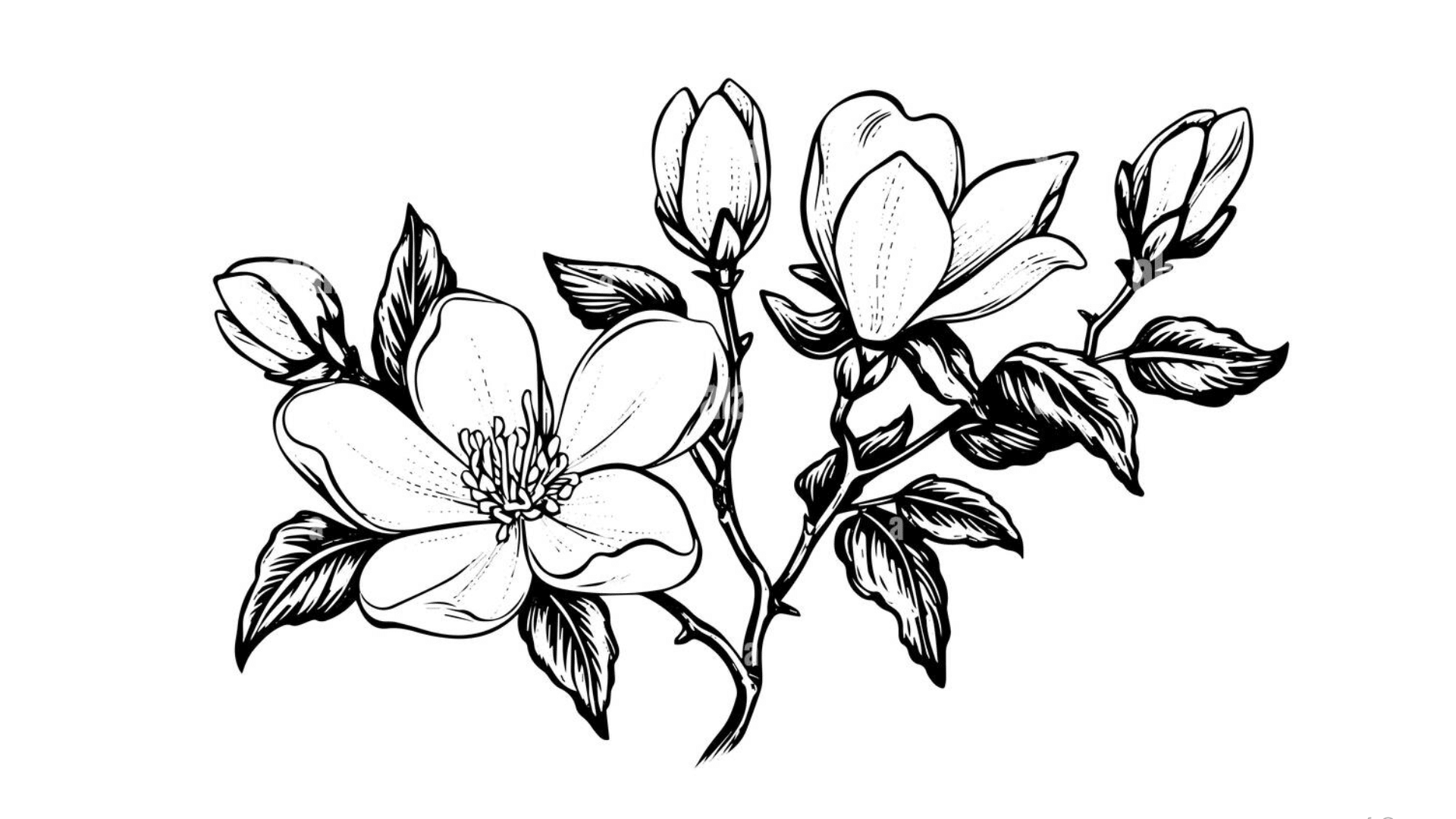
Magnolias feature large, smooth petals arranged in a cup-like formation around a central cone. Their clean, bold shapes make them ideal for stylized sketches or serene botanical pieces that emphasize form and beauty.
- Style Tip: Use soft, sweeping strokes to reflect the petal’s waxy, smooth texture.
- Great For: Minimalist compositions, botanical prints, floral centerpieces.
- How to Draw: Start with an elongated central cone or bud, then add overlapping teardrop-shaped petals around it, opening upward. Include a thick stem and a few glossy, broad leaves for balance.
22. Camellia
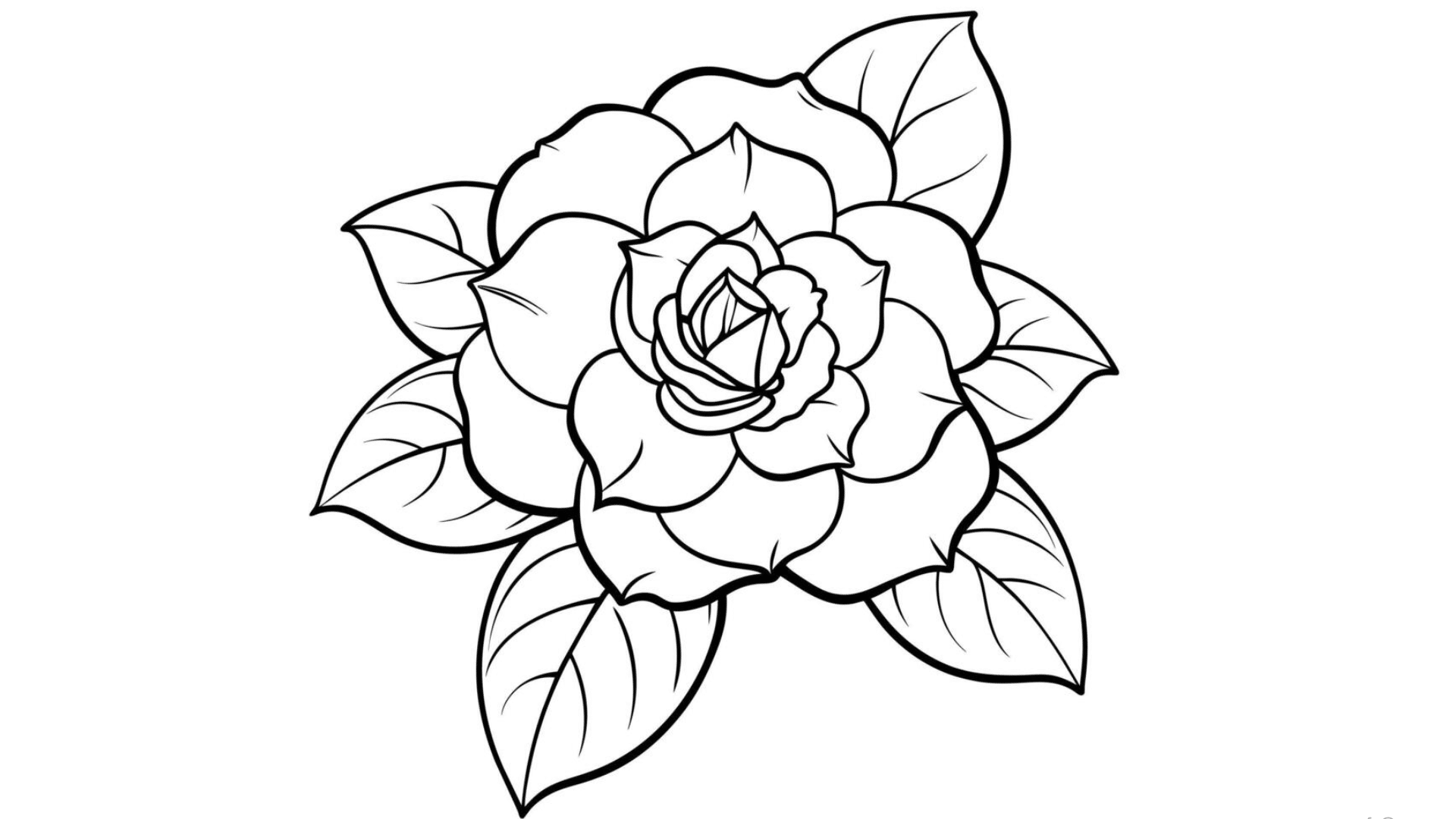
Camellias are dense, symmetrical flowers with tightly layered, rounded petals that create a rose-like effect. Their refined structure and glossy leaves make them perfect for polished floral sketches and beautiful botanical designs.
- Style Tip: Use concentric layering and clean outlines to emphasize symmetry.
- Great For: Graceful bouquet studies, botanical journaling, East Asian-inspired art.
- How to Draw: Begin with a small central petal, then add rounded petals in spiral layers around it. Keep petal size consistent for a structured look, and frame with broad, smooth-edged leaves.
23. Bluebells
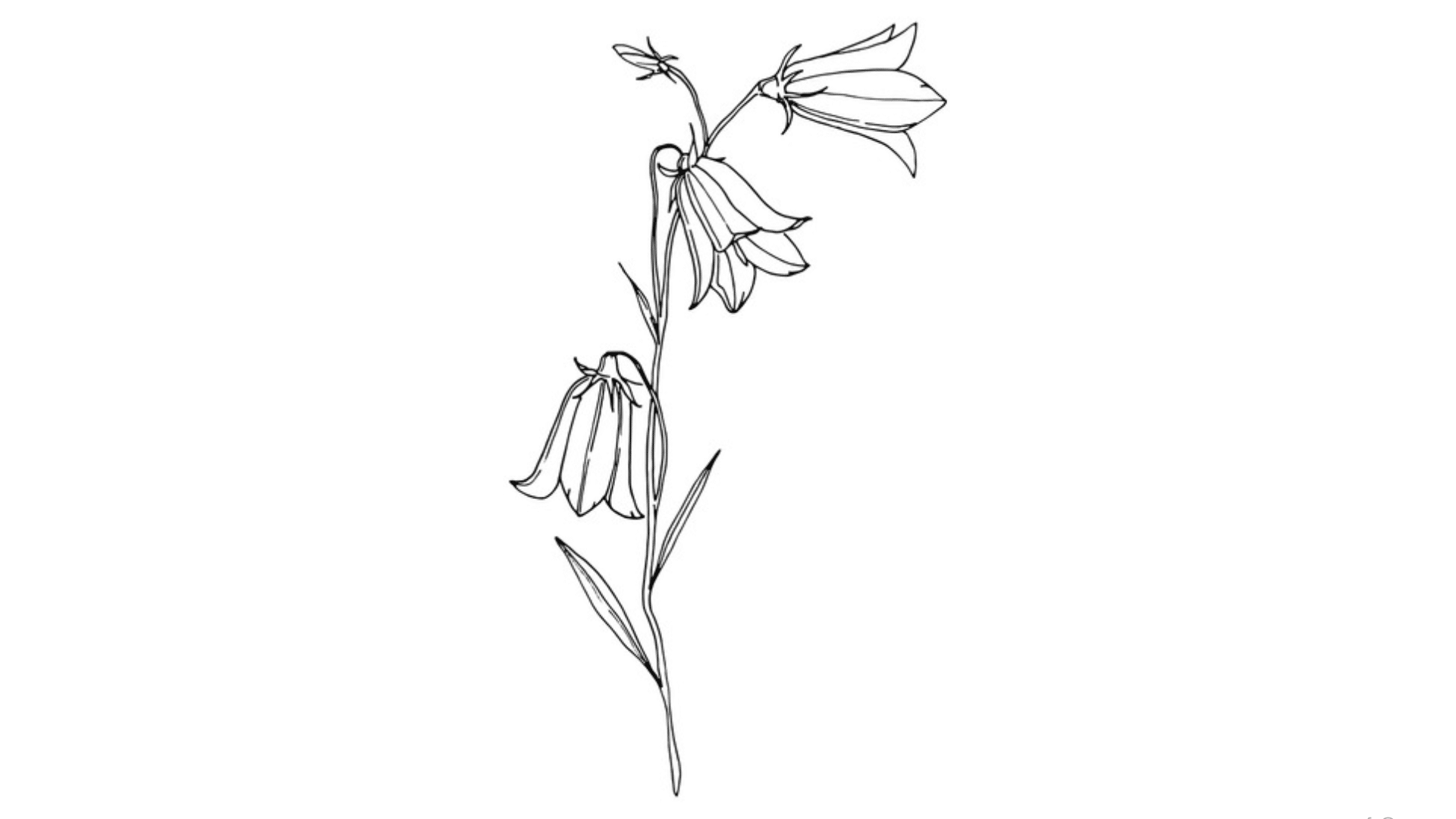
Bluebells are delicate, bell-shaped flowers that hang in graceful arches from slender stems. Their soft curves and nodding posture give floral compositions a sense of motion and gentleness—ideal for adding flow to garden scenes.
- Style Tip: Use light, arched lines and gentle shading to suggest drooping motion.
- Great For: Woodland scenes, minimalist line art, soft watercolor washes.
- How to Draw: Start with a curved stem, then draw small, bell-shaped flowers facing downward. Add scalloped edges to the petals and sketch a few thin, blade-like leaves around the base.
24. Hydrangea
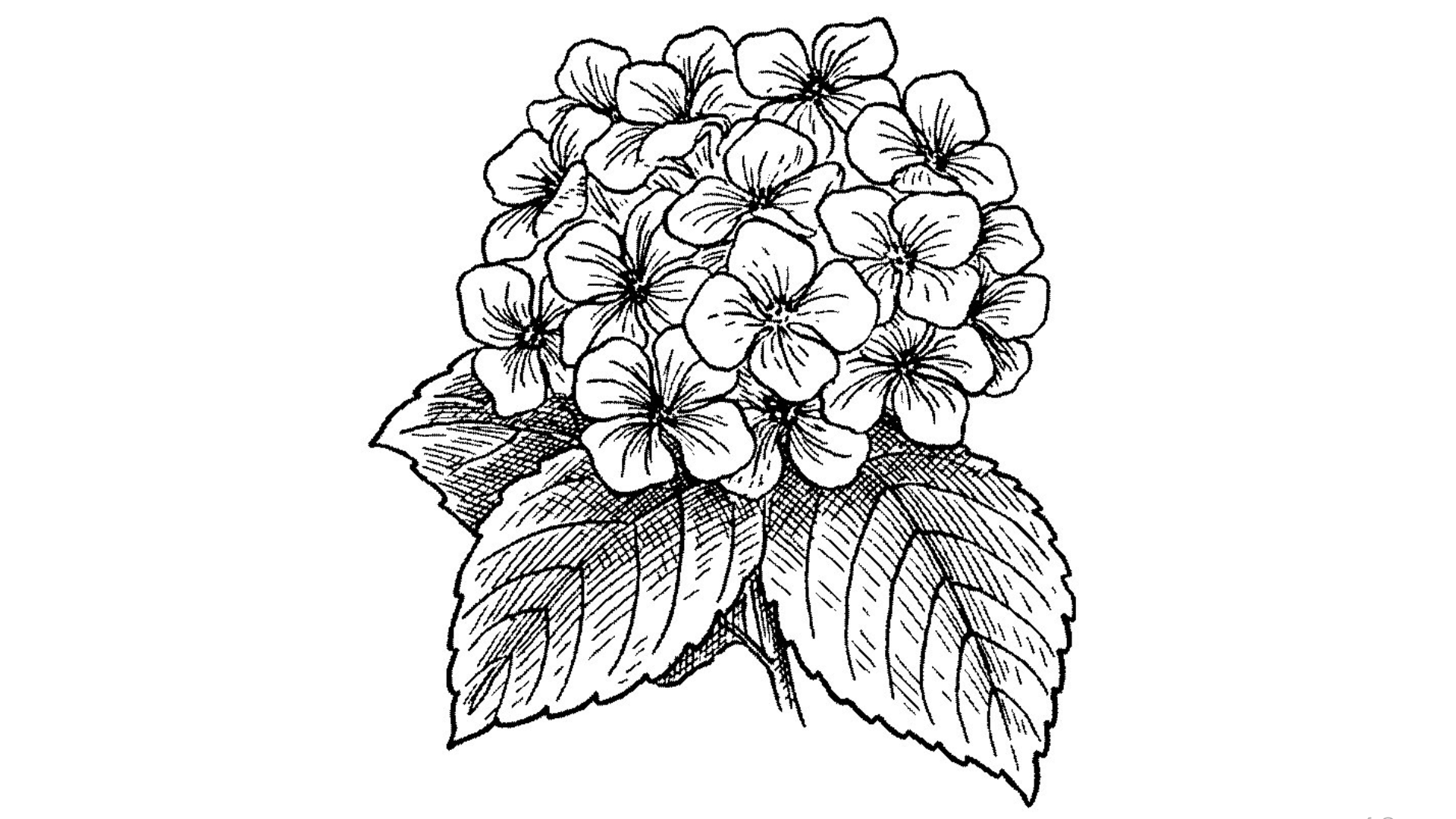
Hydrangeas are known for their globe-shaped clusters made of many tiny, four-petaled flowers. Their complex texture may look intricate but is easy to break down into repeated simple forms, ideal for creating full, blooming compositions.
- Style Tip: Use loose, overlapping circles to build the fluffy volume first, then add small flowers inside.
- Great For: Decorative borders, botanical studies, watercolor layering.
- How to Draw: Sketch a large round outline, then fill it with dozens of tiny cross- or star-shaped flowers, each with four rounded petals and a small center dot. Add minimal leaves and stems for support.
25. Hawthorn
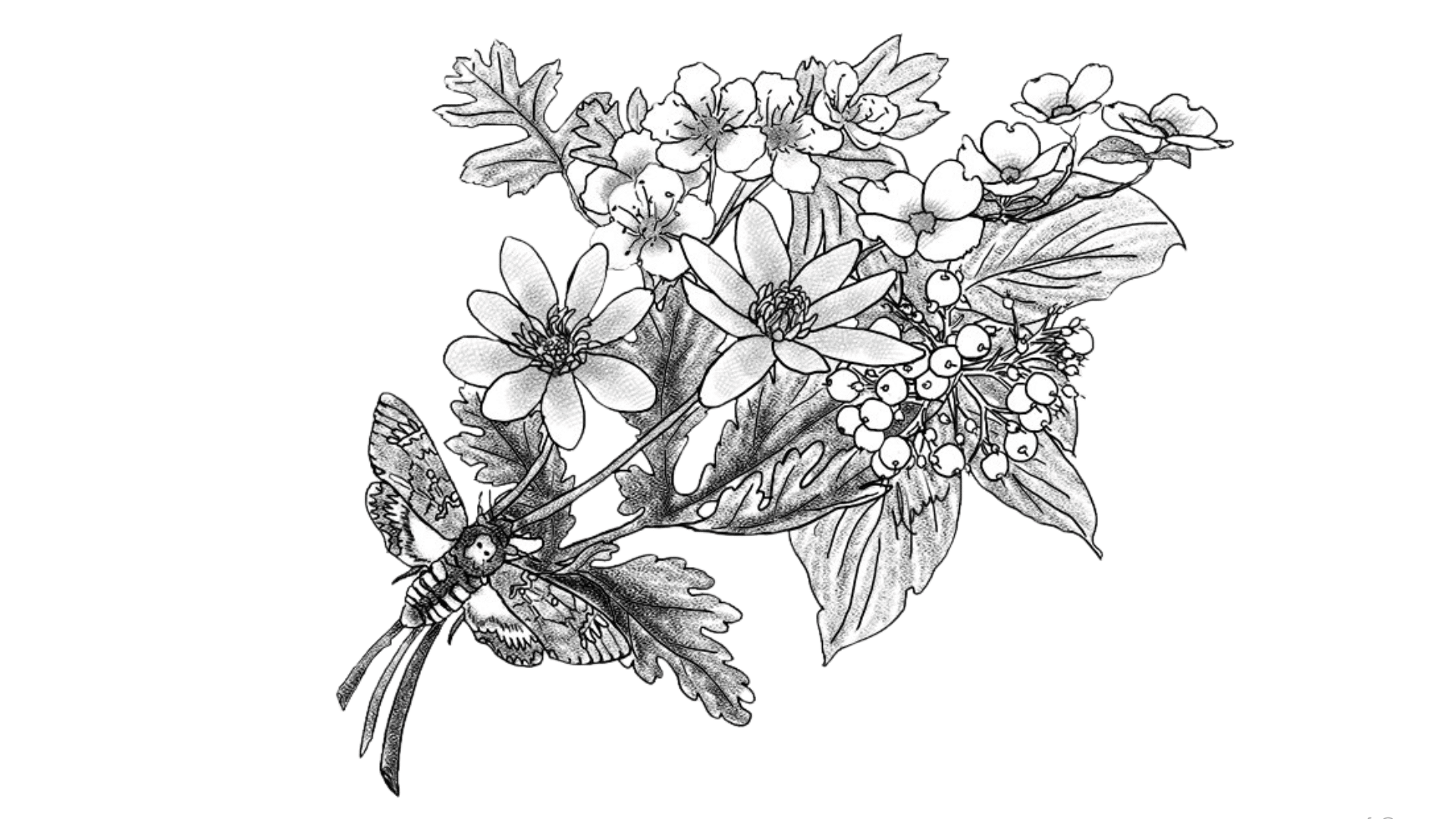
Hawthorn flowers are small, delicate blossoms with five rounded petals, often clustered in bunches on branching stems.
Their simple charm makes them perfect for nature sketches and symbolic art tied to protection and the heart.
- Style Tip: Keep petals slightly irregular for a natural, wildflower effect.
- Great For: Botanical line work, folklore-inspired art, spring illustrations.
- How to Draw: Begin with tiny five-petal flowers (each petal slightly notched or rounded), add tiny stamens in the center, and arrange them in loose clusters with branching stems and small, jagged leaves.
26. Peony
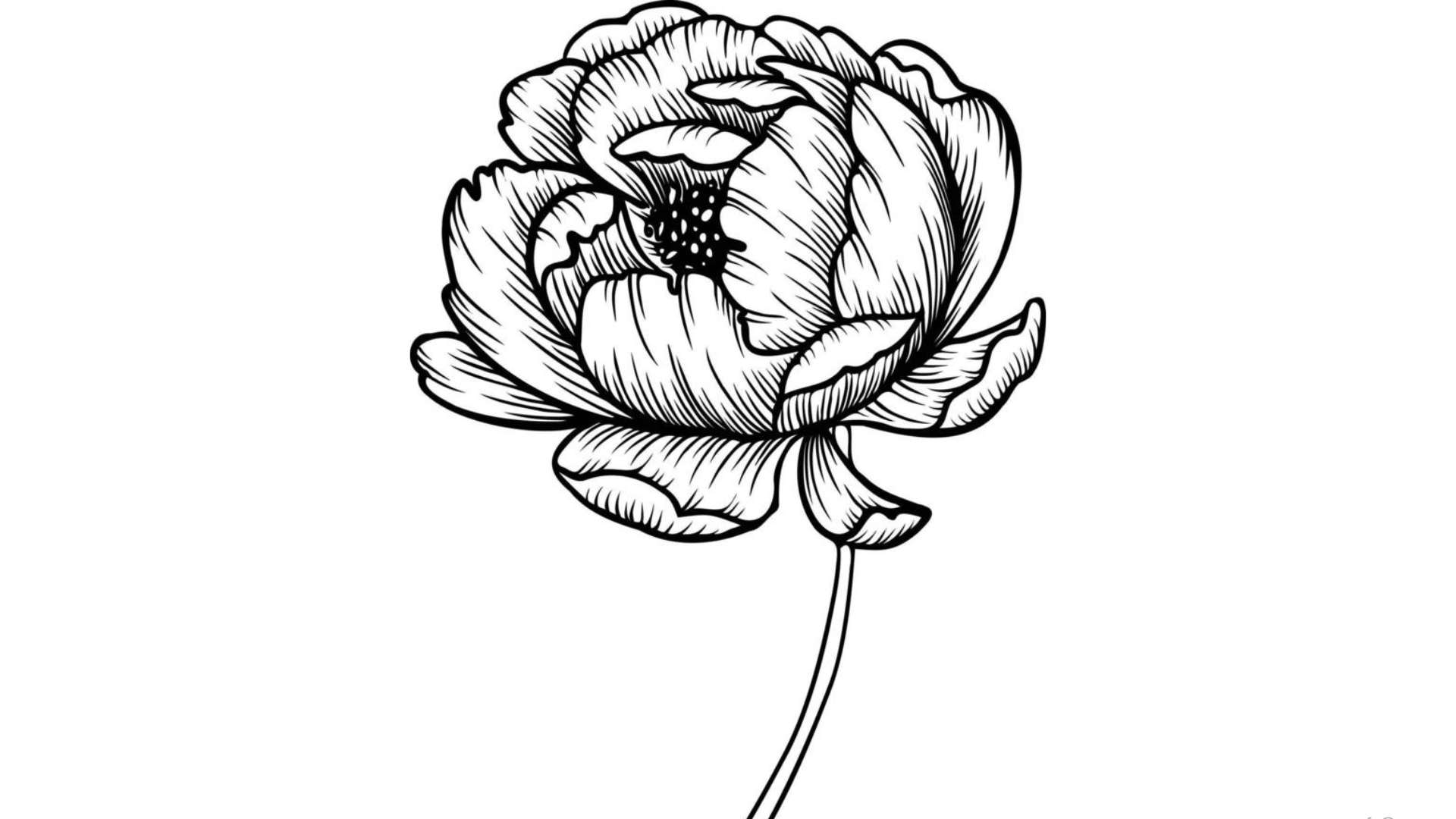
Peonies are lush, layered flowers with soft, ruffled petals radiating from a dense center. Their full-bodied shape makes them ideal for practicing volume, petal layering, and romantic floral compositions.
- Style Tip: Use varied line weights to separate foreground and background petals.
- Great For: beautiful bouquet sketches, wedding-themed art, detailed shading practice.
- How to Draw: Start with a loose central core of overlapping short petals, then gradually expand outward with wider, rounded, wavy petals in layers. Add a few broad leaves to frame the bloom.
27. Aster

Asters feature a dainty yellow center surrounded by numerous thin, elongated petals. With their star-like shape and delicate lines, they’re perfect for creating light, airy floral elements in garden scenes or botanical patterns.
- Style Tip: Keep petals fine and slightly uneven to convey natural variation.
- Great For: Wildflower meadows, journal illustrations, light ink work.
- How to Draw: Draw a small central circle, then radiate many narrow, straight or slightly curved petals all around. Add a thin stem and a few simple leaves for structure.
Tips to Uplift Your Flower Drawings
These techniques will change simple sketches into eye-catching pieces. Small tweaks in composition, style, and finishing touches can make a huge difference in how your work feels and flows.
- Arranging florals in clusters, borders, or frames: Group flowers together for visual impact, or create delicate borders around pages. Frame compositions work especially well for greeting cards or journal spreads.
- Playing with symmetry vs. organic forms: Perfect symmetry feels formal and structured, while organic, asymmetrical arrangements feel more natural and relaxed. Mix both approaches depending on your mood.
- Background ideas with watercolor blooms, gold leaf accents, and ink splashes: Don’t leave backgrounds blank. Soft watercolor washes, metallic touches, or controlled ink splatters add depth and personality to your flower drawing ideas.
- Light and shadow play for realism or stylization: Strategic shading brings flowers to life, but you can also use dramatic shadows for mood or skip them entirely for a clean, modern look.
Conclusion
Your artistic journey with flowers is just beginning. Each petal you sketch, every stem you shade, builds your creative confidence and personal style.
Some of the most beautiful art comes from patient observation and playful experimentation.
So grab your favorite drawing tools and let these flower drawing ideas inspire you to make new artistic discoveries. Start drawing.


